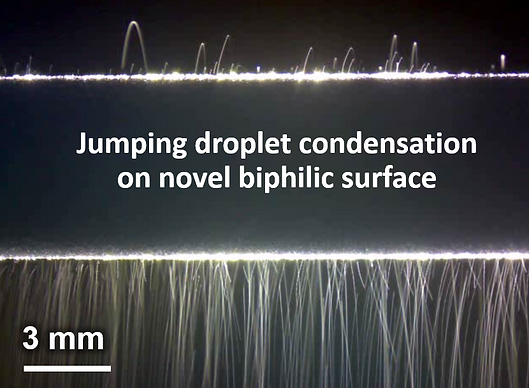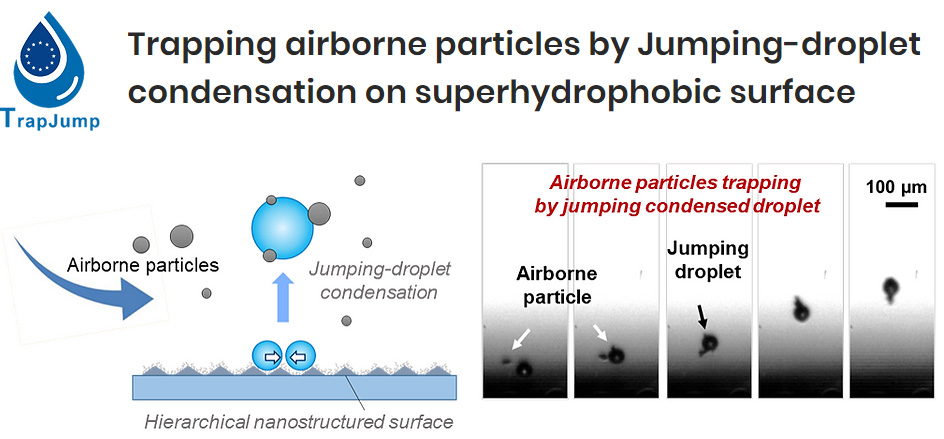Condensation of water vapor is ubiquitous in nature and of significant importance in various applications involved with phase change heat transfer, such as power generation, indoor environmental control, water harvesting, and desalination. In recent years, with the advancements in micro/nanofabrication, nanostructured superhydrophobic surfaces have attracted widespread attention due to their potential for improving droplet mobility and, in some cases, leading to coalescence-induced droplet jumping.
Inhalation of microscale particles can cause severe health issues in the respiratory and cardiovascular systems of humans. Trapping airborne particles by water droplets is one of the most widely used methods to reduce particle concentration in polluted air. However, generating intensive micro-droplets via spraying or ultrasonic atomization normally requires specialized equipment and a large amount of energy. Our goal is to develop a novel and cost-effective approach to capturing particles by utilizing abundant self-jumping droplets generated during condensation on a superhydrophobic surface.


At the AECR Lab, we are theoretically and experimentally investigating enhanced condensation heat transfer for water and low-surface-fluids condensation by superhydrophobic, amphiphobic and biphilic surfaces. Our studies cover the fabrication, characterization, and wetting dynamics of superhydrophobic materials during condensation, for exploring the role of surface structure and chemistry on water nucleation, growth, and departure characteristics. Meanwhile, we are interested to create scalable and durable superhydrophobic surfaces that can be applied in industries for multiple years.